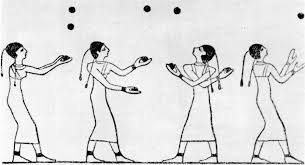
As I rode the train back from Chicago the other day, I began to notice how very many of the cell conversations around me had to do with helping someone on the other end fix technology. Go to this screen, push that button, okay just try turning it on and off. Palpable frustration on both ends.
I realized with smug satisfaction that nobody has ever had such a conversation about a printed book- how do I turn it on, how do I turn it off, how do I make it do what I want it to do. This will be my last comment on e-books for 2010.
Harvard, Yale, and MIT together published just over one thousand titles in 2010. Among this bounty were so many wonderful books, and though I'm paid to promote them all, personal favorites are unavoidable. I’d recommend every one of these with confidence, and would be thrilled to receive them as gifts myself.
The Naïve & the Sentimental Novelist
Orhan Pamuk (Harvard)
Short and sweet, this homage to the craft is both a defense of novel writing and a celebration of novel reading. A bonus: one of the best jackets of the season (says Huffington Post).
Pride and Prejudice: An Annotated Edition
Jane Austen (Harvard)
I’ve about run out of superlatives to describe the production values on this one. Just pick it up and see for yourself. The scholarship is also top notch. Every Austen reader will covet this, and it will make those who haven’t read her dedicated fans.
Age of Fracture
Daniel T. Rodgers (Harvard)
Though maybe not a “gift book” strictly speaking, I was so impressed with this big picture idea book I want to give it to all my political friends. An argument against the obsession with individual desire, and for a more robust sense of social obligation, I can’t think of a more timely book with which to start the new year.
How Many Friends Does One Person Need?
Robin Dunbar (Harvard)
For the Malcolm Gladwell fans, an eclectic collection of essays by a quirky, smart but funny British writer. You should be suspicious of anyone who has more than 150 Facebook friends, and the reason is rooted in our evolutionary psychology!
Designing Media
Bill Moggridge (MIT)
On the surface, the subject of this collection seems specialized: how has mass media morphed into personal media right under our noses? But as I browsed through these interviews with some of the smartest brains in contemporary design, I found something of interest to print lovers on nearly every page. The book design is beyond lavish, and it includes a DVD, making it one of the bargains of the season.
FASHIONEAST: The Spectre that Haunted Socialism
Djurdja Bartlett (MIT)
Did you realize that clothing was one of the first revolutionary media? This colorful and often hilarious tour through “communist chic” is informative and an eye-opener. And prompts the question: could we erase our class differences by adopting an egalitarian fashion aesthetic?
A Little Book of Language
David Crystal (Yale)
A light history of language written for a young audience, the book and package definitely takes its lead from Ernst Gombrich’s wonderful Little History of the World. Other things they have in common: a charming voice that speaks to readers of any age, gorgeous illustrations and book design, and a compelling, universally interesting subject. Oh, and a great price.
The American Department Store Transformed, 1920-1960
Richard Longstreth (Yale)
Though this was a somewhat “back of the catalog” book last spring, it’s one of my favorites of the year. Fifteen years in the works, the author brings a clear passion for these old lost monuments to the work. It’s a sad story, but the mesmerizing graphics and ephemera will appeal to anyone who longs for the days of Gimbels, Marshall Field’s and Frederick & Nelson.
Houdini: Art and Magic
Brooke Kamin Rapaport (Yale)
This was one of those books I sold for a season and thought I knew well, only to gasp in awe when I saw the final product. Wow. Produced by the Jewish Museum (everything they do looks great, I should have known), this visually rich trip through Houdini-land is the best biography yet. One of my bookseller friends who is selling it like crazy pointed out that there’s a quiet but passionate Houdini cult who “have to have everything.”
Kurt Schwitters: Color and Collage
Isabel Schulz (Yale)
This under-published German artist, one of the most important figures in the international avant-garde, is a personal favorite. Every art student I know seems to be obsessed with pastiche and found objects, but Schwitters was the original. Train tickets, pieces of wire, newspaper fragments- quotidian detritus of every sort got smooshed into his gorgeous abstract creations. Produced by the Menil Collection, the book is a stunner.
Adonis: Selected Poems
Translated by Khaled Mattawa (Yale)
This recent installment in Yale’s remarkable Margellos World Republic of Letters translation series is a must have for every poetry lover. It’s hard to believe this collection by one of the most celebrated poets in the Arab-speaking world has not been widely available in English. He’s short-listed for the Nobel nearly every year. See why here.












